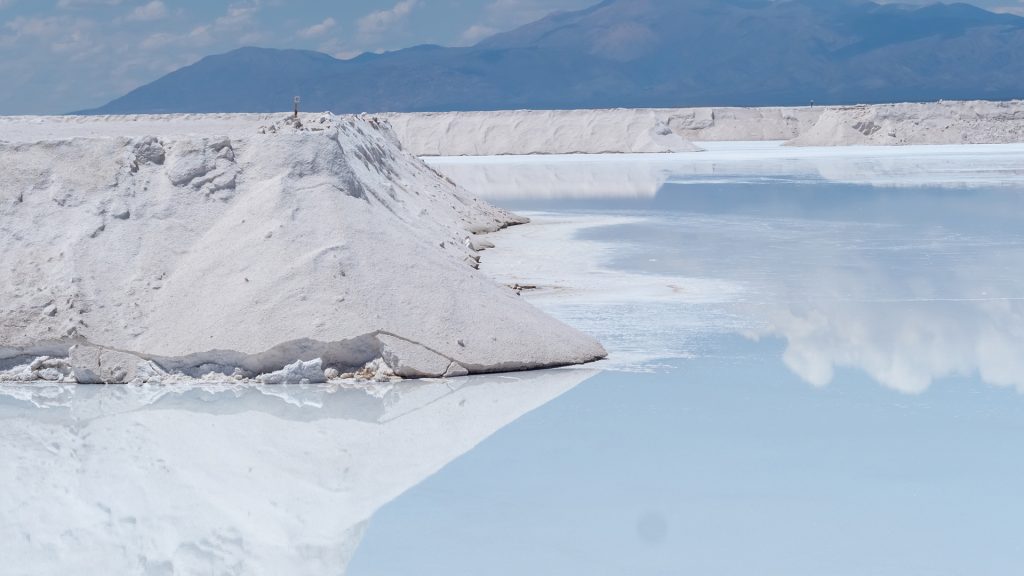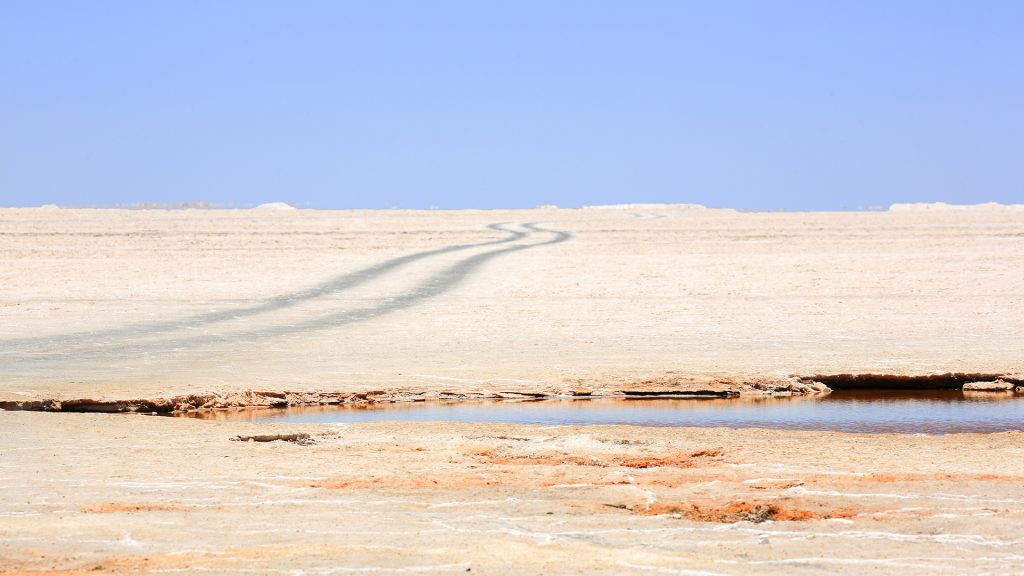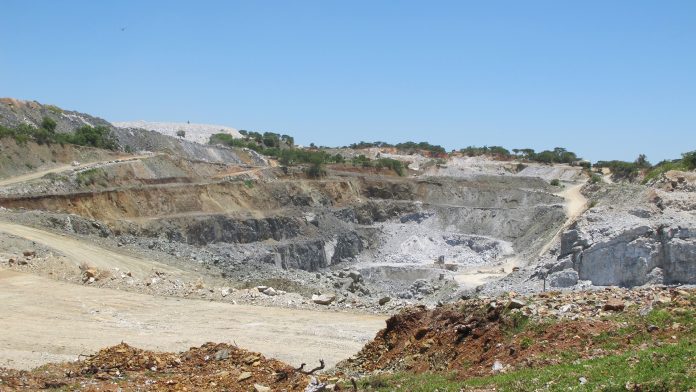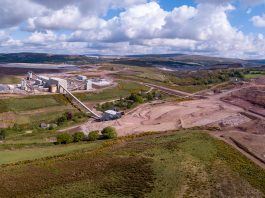Dr Kathryn Goodenough, BGS Principal Geologist and LiFT Project Principal Investigator, examines the importance of researching different types of lithium deposits to support the discovery of new and sustainable lithium resources.
As countries around the world work to achieve their respective green energy goals, lithium demand is expected to rapidly increase due to its use in lithium-ion batteries (LIBs), the dominant battery technology used for electric vehicles (EVs) and energy storage. Whilst recycling will play an increasing part, extraction of lithium from primary mineral deposits must also increase to keep up with this rise in global demand. Additional research into how these primary lithium deposits formed is necessary to ensure effective exploration of sustainable lithium resources and efficient mine development.
Funded by the UK’s Natural Environment Research Council (NERC), the Lithium for Future Technology (LiFT) project will investigate different types of lithium deposits to develop a new understanding of the processes that control formation of those deposits. Through this research, the project aims to support the discovery of new and sustainable lithium resources that can be extracted to aid the transition to clean energy.
Emily Potts, Deputy Editor of The Innovation Platform, spoke to Dr Kathryn Goodenough, Principal Geologist at the British Geological Survey (BGS) and LiFT project Principal Investigator, about the aims of the project and the need to extract more lithium in the most sustainable way.

How important is lithium to the global energy transition and where is the commodity currently extracted from?
Lithium is essential to the global energy transition and is needed to decarbonise energy and transport. To allow countries around the globe to move towards carbon neutrality, there needs to be greater usage of EVs, which require batteries. Batteries will also be needed for energy storage, such as in wind farms. Currently, the dominant battery technology is the LIB, and that is not expected to change in the immediate future.
LIBs require a range of different raw materials, and the exact mix of those raw materials can change, but lithium will always be needed. Lithium has the highest conductivity, and it is the most suitable raw material for use in batteries. This makes lithium a vital material.
Worldwide, there are three main types of lithium natural resources. The first is brines, which are well known in the Lithium Triangle in South America where a large proportion of the world’s lithium is produced. Here, the brines are extracted from the salars (salt flats).
Lithium-enriched brines can also be found in other places, for example in Cornwall, where lithium may have leached out of lithium-rich rocks and is circulating in brines in fractures underground. Extracting lithium out of those brines is the subject of a lot of current research.
The second source of lithium and the other primary source where we have current lithium production are the hard rocks, the granites, and pegmatites. These are crystalline igneous rocks formed deep beneath the Earth’s surface. Those can vary in the ore minerals of lithium, but the most common ore mineral is spodumene, which is the main mineral mined for lithium in Australia. That is a very pure source of lithium, but much energy is needed to process the ore and extract the lithium from it.
The third source is the sedimentary deposits. Thacker Pass in Nevada and Jadar in Serbia are examples. Such deposits are potentially huge and are important, but they are not in production yet and there are still challenges to be dealt with in areas such as processing and refining.
Lithium deposits are relatively common. We already know about many, and, with further exploration, more will be identified. Every continent and most countries in the world will have a lithium deposit, either known already or that could be found with exploration.
As a result, it is highly unlikely that we will run out of lithium in the Earth’s crust any time soon, and thus, there is no need to switch to another battery technology. The barriers to extracting lithium are not that there is not enough of this resource, but there are economic, technical, environmental, and social challenges. There is plenty to supply all we need for the foreseeable future in terms of the amount of lithium in the Earth’s crust.
What are the aims of the LiFT project and why was it necessary to set the project up?
The LiFT project is a research project funded by NERC through a set of grants. The cross-institutional project is led by the BGS and involves five organisations: the BGS, Natural History Museum, and the Universities of Exeter, Southampton, and Edinburgh.
LiFT is one of NERC’s Highlight Topics, which focus on timely subject matters with real-world relevance. With the rise in EVs, all battery raw materials are going to be vitally important, but lithium, in particular, is the raw material for which demand, and potentially price, are most likely to increase.
We proposed to NERC that research is needed on lithium deposits, not just looking at individual deposits, but trying to understand how these deposits form and how lithium has circulated in the Earth’s crust over geological time. There are several different types of lithium deposits. The LiFT project aims to investigate the geology of each type to try to understand how they may relate to each other in terms of geological processes controlling how they formed. In this way, we are applying the mineral systems approach to lithium deposits.
It is essential to look at the evolution of different types of natural deposits. For example, there has been more research on the salars in South America than some other types of deposits. When looking at brines in South America, we might use the information we gain to understand a lithium deposit such as Jadar in Serbia.
We are also investigating the potential for innovative methods of extraction, principally using microbiological methods, and we have a component on the life cycle analysis of lithium deposits.
Over the last few years, lithium research has exploded, and LiFT is now the leading research project in the UK looking at lithium natural resources.
What phase is the LiFT project currently in and what has already been achieved?

The LiFT project was originally funded for three years from the end of 2020 but, from the onset, we had to develop the project in the context of the COVID-19 pandemic, meaning that we have not been able to conduct as much fieldwork and collection of material as we had hoped.
Despite this, we have still managed to achieve a great deal. We have several researchers working on the project who are advancing our understanding of the geology of the different deposits. One of the deposits that we are particularly interested in is the very large Jadar deposit in Serbia, which is not well understood in terms of its geology. We do not understand exactly how it formed, or indeed, if there are any deposits like Jadar elsewhere in the world.
Local concerns about mining at Jadar have recently led the Serbian Government to revoke the mining licence for this deposit. Despite this, being able to understand its geology is still vital because, if there are other deposits like Jadar, we need to be able to identify where they are. Some of our researchers are working to understand how the deposit formed, based on samples that we already have in the UK.
We have another group of researchers working on modelling the hydrogeology of the salars in South America to understand the origin of these lithium deposits. It is important to understand the salars not just as mineral deposits, but also as hydrological systems, due to the real concerns around the use of water. When extracting lithium from brine, lithium is essentially extracted from salty waters, and that could have a direct impact on the wider groundwater systems in the area.
As a research project, although we have companies as project partners, our funding is completely independent, and that means we can be impartial. Our modelling will provide a totally independent overview of these salars as hydrogeological systems.
We are also working on hard rock lithium deposits, particularly aiming to understand their mineralogy, which is important for mineral processing and extraction. Lithium occurs in a wide range of minerals, and being able to process those minerals to produce sufficiently pure lithium compounds is a vital part of lithium production. The LiFT project is advancing some exciting research and we hope it will produce really valuable results.
What are Europe’s capabilities for extracting lithium?
Most countries in Europe have either a known lithium deposit or have the potential to be discovered. Some of these lithium deposits are very well known, particularly in Spain, Portugal, Germany, and Serbia. There are also notable deposits in the UK, and the Scandinavian countries. These vary in type – some of the deposits require more research but, for several deposits, mining could be achieved now if the conditions were right, and that is the problem that we are facing.
Currently, Europe is not extracting lithium due to economic and social factors, not because of the continent’s geology. There is a lack of public acceptance for European lithium mining and, without this, investor confidence is low, which leads to insufficient financing. Europe needs lithium and the continent could be building the best mines, following the best principles, ensuring good environmental management, and the best possible social impact and governance.
Instead of doing that, what we often see, and what we are currently witnessing in Serbia, is that mines do not open in Europe because of public distrust of mining. Europe has to outsource lithium mining where perhaps the governance is not as good, and the environmental and social impacts are less positive. This is a real concern.
A major issue is communication: people fear lithium mining because they have a lack of knowledge about it. The lithium mines which people generally hear about are those in South America, where there is a lot of concern around the use of water, for example. There is not a great deal of dialogue around the well-run lithium mines in Australia, however. Mining for lithium in hard rock is not much different from a granite quarry, as they use many of the same processes. The negative perception of lithium mining must change if we are to supply the lithium needed for the energy transition.
What are the current techniques for lithium extraction, and can you explain the differences between extraction techniques for different types of lithium deposits?
Firstly, the current extraction technique for the South American brines involves the brines being pumped into big evaporation ponds. The lithium salts are then concentrated by solar evaporation. This technique relies on particular climatic conditions in that part of South America and has led to some public concern about the impacts on the freshwater system.
The other way to extract lithium from brines is through a group of techniques called Direct Lithium Extraction (DLE). Within DLE, there is a whole range of different methods. For brines that are circulating underground in areas other than South America, DLE should be the technique of choice. For example, Cornish Lithium plans to work with a geothermal company in Cornwall to simultaneously extract heat from beneath the surface and extract lithium from the hot fluids through DLE techniques.
The issue is that, currently, DLE is not widely used on a commercial scale. There is a lot of research and pilot-scale work but actual commercial-scale production by those methods is not yet very common. DLE has the potential to become a game-changer in years to come when it is rolled out on a larger scale.
Lithium in granite and pegmatite, particularly in the previously mentioned crystalline deposits, is typically mined in an open-pit, where a large quantity of rock is being quarried. There are then two steps to extract the lithium. First, the producer must beneficiate, separating the lithium mineral from all the other minerals that are not needed. This is usually done onsite at the mine. There are many different techniques for beneficiating, depending on the exact minerals that are in the rock. This will leave a concentrate of lithium minerals, and that will then need to be processed to extract the lithium to produce either lithium carbonate or lithium hydroxide – the compounds needed for battery manufacturing.
There are a whole different group of processing techniques that depend on what minerals are in a certain lithium deposit. Every deposit has a different flow sheet for its mineral processing because a range of different techniques should be used depending on the individual deposit.
That second step of mineral processing most commonly happens in China, as a lot of lithium minerals are shipped there for processing. However, there are now processing plants developing elsewhere in the world.

What innovative mining technologies can be employed to mitigate any environmental concerns?
There is ongoing research looking at improving the techniques used. For example, all of the DLE techniques are ways of trying to mitigate environmental concerns by extracting lithium from brines. In the LiFT project, we are looking at microbiology, using microbes to speed up the extraction of lithium from minerals, for example. There are possibilities of techniques like in situ leaching. The mining industry has a good track record of developing a variety of innovative extraction techniques.
There is a lot of research, both industry-funded and, like ourselves, independently funded, to establish ways to extract lithium from ores in the best way possible. Mineral processing is never going to be simple, it may use substantial amounts of energy or acids, but these impacts can be minimised.
There will not be an energy transition without lithium. The LiFT project and researchers around the world aim to ensure that we can mine lithium whilst minimising environmental and social impacts. Lithium mining and mining for critical raw materials does not have to be intimidating. To achieve the goals of the global energy transition, mining should take place and should be done in the best possible way.
Dr Kathryn Goodenough
Principal Geologist
British Geological Survey
www.bgs.ac.uk/people/goodenough-kathryn-clone/
http://lithiumfuture.org/index.html
Please note, this article will also appear in the tenth edition of our quarterly publication.









